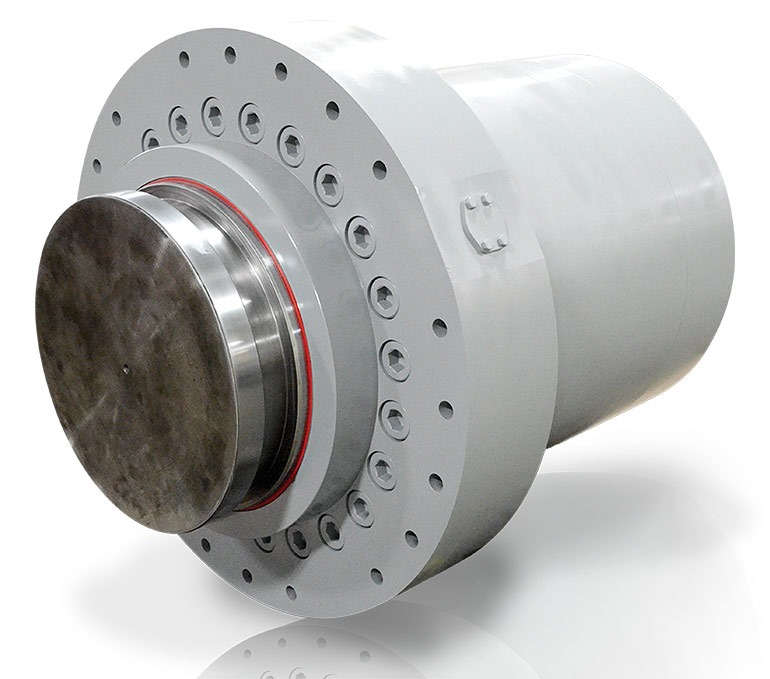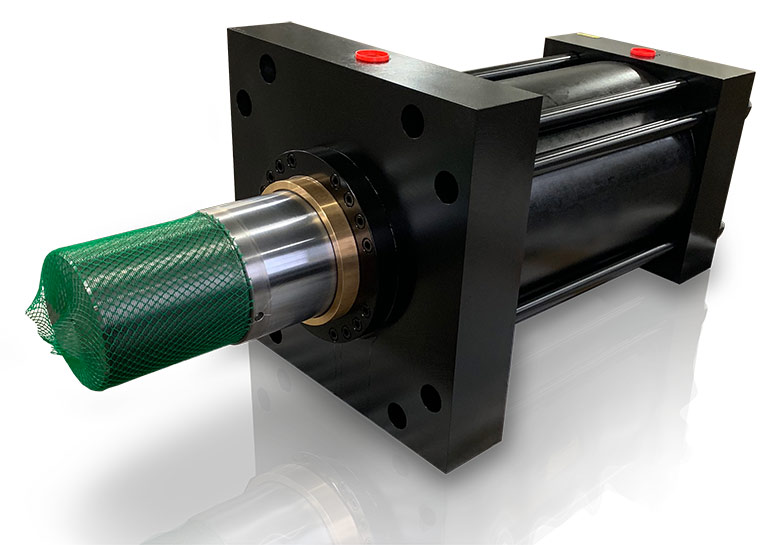By Josh Cosford, Contributing Editor
Technological advancement is accelerating at an exponential pace. Consider only fifty years ago how hydraulic cylinders were constructed much the same as they are today, yet how much has electronic, information and digital technology surpassed our venerable actuators? Hydraulic cylinders are simple and effective. They are so effective, in fact, one could consider them a perfect technology. What other component remains unchanged for decades yet remains superior to all other competitive technologies? Even we humans are soon to be obsoleted by artificial intelligence. Watch some recent videos on AI, and you’ll find yourself considering removing the wifi from your home.
Cylinders still contain, for the most part, the same components as always — namely, a piston, rod, barrel, head, cap, and seals. Most offer a bronze bushing to support the rod, but even those may be replaced by wear strips if the application allows it. However, all the steel components offer little in the way of new technology — steel and chrome are the same as in 1965, with only marginal improvements to cylinder technology.

Courtesy of Yates Industries
Seals, on the other hand, have provided much of the technology cylinders exploited to offer high pressure reliably. Today’s cylinders on mobile machinery with high-pressure systems cresting 6,000 psi have seal technology to thank for their continued relevance. Advancements in synthetic rubbers, sophisticated fluid modelling and experience have led to manufacturers creating seal designs that provide high-pressure operation for various applications.
We’d like to think hydraulic technology will last well into the future, but other offerings (such as electric actuators) may displace our venerable cylinder. To help alleviate my fear of a hydraulic-less future, I asked Steve Cavera at Yates Industries for his opinion on the direction cylinders may take.
Cavera has been with Yates as National Sales Manager spanning more than fourteen years. His responsibilities include all sales operations for all of Yates’ facilities, where he oversees nationwide customers and distributors. Yates turned 50 just this year, spending those decades serving as many industries as there are using cylinders — paper/pulp, wood, plastics, automotive, government, steel/aluminum/metals, food, pharma, agriculture, oil & gas and shipbuilding.
I asked Cavera what trends he sees with cylinder technology, to which he responded, “Smart sensors and the technology that they provide feedback-wise, and also quality-wise. Some (technology) emergent into electrical but mainly in automation.”
Aside from seals, which have done much to improve hydraulic cylinders, sensory technology provides machine control systems with a method to intelligently operate what is essentially a “dumb” component. Using either discrete position sensors (proximity switches) or linear transducers (LDTs), machines know either when the cylinder is at the end of stroke or any position in between down to a fraction of an inch.

Courtesy of Yates Industries
Although proximity switches installed into the head and cap of a cylinder provide just a trigger to the PLC that the cylinder has reached the end of stroke, this technology is excellent for process automation where we only need to know discrete positions. An LDT (Linear Differential Transducer) offers the machine controller precise cylinder position down to thousandths of an inch with rapid response time. Using the right valve technology to control directional flow, even huge cylinders may be positioned rapidly and precisely.
Even with the addition of technology, one might be curious if the cylinder’s days are numbered. I asked Cavera if electric actuators will ever replace hydraulic cylinders. “I don’t think so. Even if the technology one day exists, it would have to make cost-effective sense as well,” he said.
He raises a great point. Sure, linear electric actuators can be fast, and some offer high force. However, “high force” for an electric actuator is still only a fraction of what a high-pressure cylinder is capable of, and electric actuators aren’t so advanced yet to offer both high speed and high force in the same package. In fact, there may actually exist a power density limit to electric actuators. This is because electric motors (linear or otherwise) use the alignment of electromagnetic conductors to create the magnetic field to move the motor. Once all atoms of the conducting material are polarity aligned, there is no more capacity to increase the magnetic field.
Theoretically, there is no real limit to the number of oil atoms you can pack into a hydraulic cylinder. Pressure may be increased exponentially so long as the materials containing that fluid remain intact.
However, just because there is no upper limit to pressure, does that mean we should strive to find out? Cavera disagrees. “I think more applications are trying to drive down the pressures because of the liability,” Cavera said. “Also, all components supplying the fluid to the cylinders have to be able to handle the increase in pressure. And at some point, those components also have limitations.”
Indeed, perhaps hyper-pressure applications will be few and far between in the decades to come. Even if cylinder construction remains primarily constant, manufacturing methods will surely improve. The days of a manual machinist turning rods and barrels while a colleague ports heads and caps using a heavy-duty drill pressure are no longer competitive tactics.
I asked Cavera how the manufacturing of cylinders has changed compared to fifty years ago, and he responded, “It’s all about processes and efficiencies, really, just like any other manufacturing environment. We all want better quality, quicker, and at prices that people can afford.”
CNC technology ushered in a period of rapid, repeatable machining not previously possible. We can now load a piece of raw material into a lathe or mill and, minutes later, pull out a finished component looking and measuring precisely as the last part. Expect Industry 4.0 to usher in a new age of flexible manufacturing, where robots automatically select the correct raw material, CNC program, and tools to create finished components with no other input than what’s provided by the ERP software at sales order entry.
Filed Under: Components Oil Coolers, Cylinders & Actuators, Mobile Hydraulic Tips, Trending